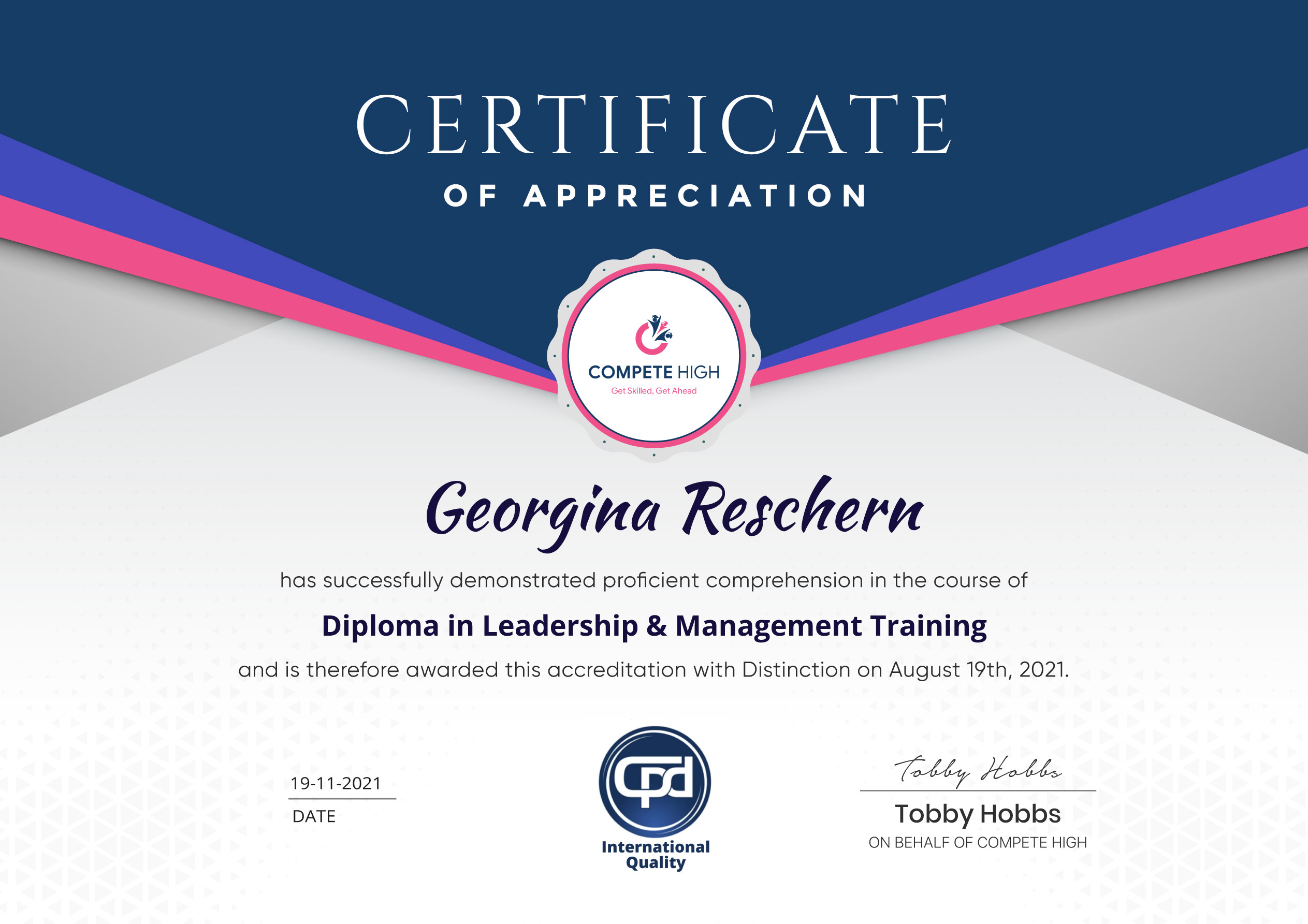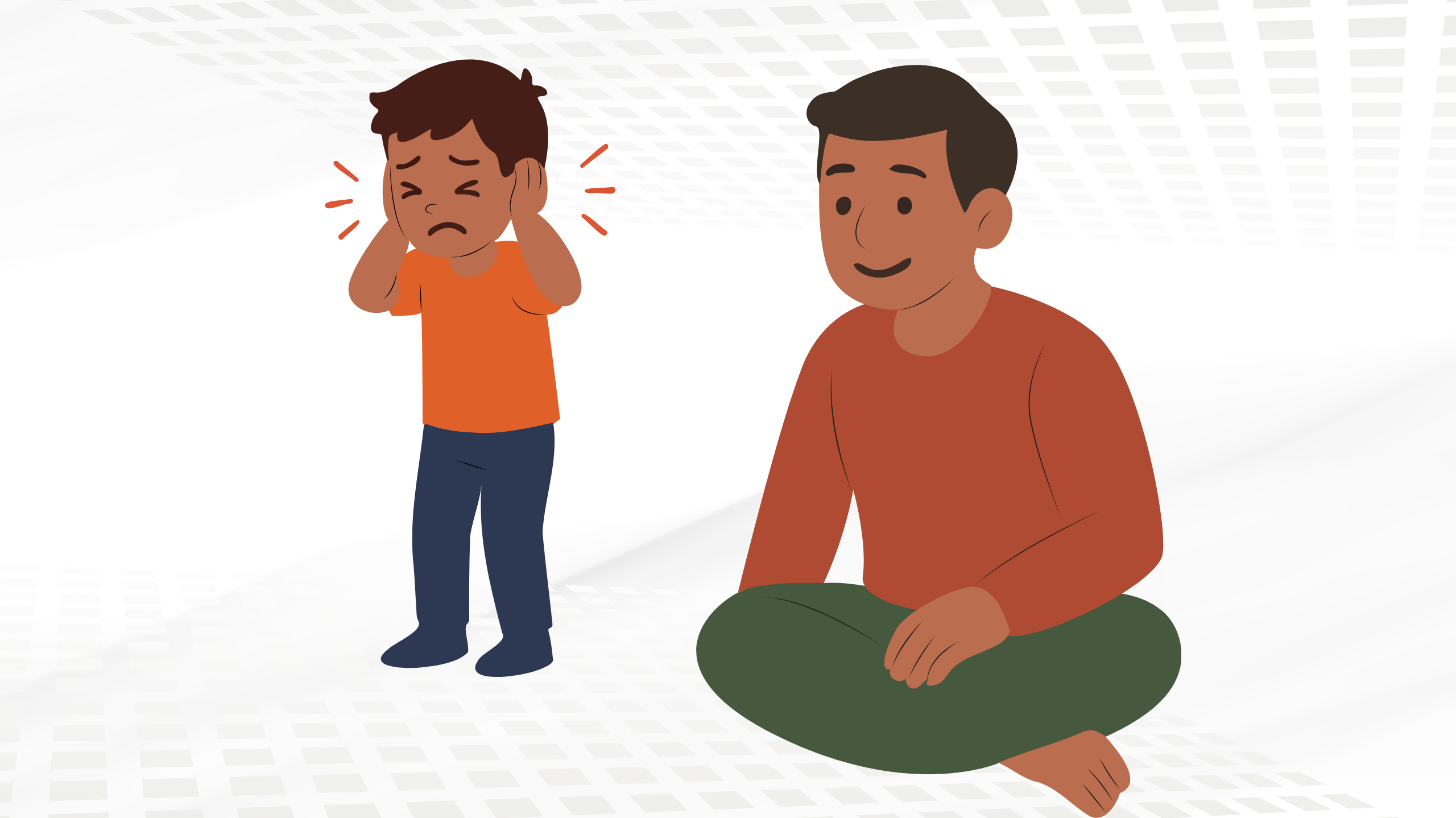Understanding Sensory Processing Differences
GET ACCESS TO ALL 1200+ COURSES FOR ONLY £149. FIND OUT MORE
Understanding Sensory Processing Differences
The Understanding Sensory Processing Differences course offers an in-depth, evidence-based exploration of how individuals perceive, interpret, and respond to sensory information from the world around them. Designed by experienced educators and specialists in neurodiversity, this comprehensive online training provides learners with the foundational knowledge and applied skills needed to understand sensory processing patterns across different sensory systems.
Through ten carefully structured modules, learners will gain insights into sensory modulation, sensory integration, and how sensory processing differences can impact daily life, learning, communication, and emotional regulation. The course highlights not only the clinical and educational perspectives but also the lived experiences of neurodivergent individuals who navigate the world with unique sensory profiles.
Understanding Sensory Processing Differences goes beyond definitions and theories. It equips learners with real-world strategies for assessment, intervention, and inclusion — ensuring that you can confidently support children, young people, and adults who experience sensory processing challenges. Whether you work in education, therapy, healthcare, or community support, this course offers valuable knowledge that can be applied immediately in professional and personal settings.
Upon successful completion, participants will receive a CPD-accredited digital certificate, signifying their commitment to professional development and inclusive practice. This certificate can be added to your portfolio or LinkedIn profile as a mark of competence in understanding sensory processing differences.
Description
Our world is full of sensory experiences — sights, sounds, textures, smells, tastes, and movements that the human brain processes every second. For many people, this happens seamlessly. But for others, the brain interprets sensory input in ways that can feel overwhelming, confusing, or even distressing. These are known as sensory processing differences.
The Understanding Sensory Processing Differences course is designed to help you explore what sensory processing means, how it varies across individuals, and why recognising these differences is key to creating inclusive environments. You will examine the science behind sensory systems, the mechanisms of sensory modulation, and the ways in which sensory input influences behaviour, attention, and emotional well-being.
This course integrates research-based learning with practical application. Through a blend of theoretical understanding and case-based examples, you will learn how to identify sensory patterns, support sensory needs, and advocate for environments that accommodate everyone’s sensory profiles.
Let’s take a closer look at what each module covers in the Understanding Sensory Processing Differences curriculum:
Module 1: Introduction to Sensory Processing
In this foundational module, you’ll learn about the basic concepts of sensory processing, how the brain organises sensory information, and why understanding sensory systems is crucial for human functioning. You’ll be introduced to the seven sensory modalities — visual, auditory, tactile, olfactory, gustatory, vestibular, and proprioceptive — and explore how they work together to create a coherent picture of our surroundings.
Module 2: Understanding Sensory Modulation
This module examines how individuals regulate their responses to sensory input. You’ll discover how sensory modulation affects behaviour and emotional control and learn to differentiate between hypersensitivity, hyposensitivity, and sensory-seeking behaviours. Real-life examples illustrate how sensory modulation difficulties appear in everyday contexts, from classrooms to workplaces.
Module 3: Visual and Auditory Processing Differences
Here you will explore how variations in visual and auditory processing can affect learning and communication. You’ll study how individuals may experience visual overload, auditory filtering challenges, and difficulties processing rapid speech or background noise. Practical tips and environmental adjustments will be provided to help reduce sensory stress.
Module 4: Tactile and Proprioceptive Processing
This module focuses on the sense of touch and body awareness. You’ll examine tactile defensiveness, proprioceptive input, and how these affect coordination, handwriting, and social interaction. You’ll also explore therapeutic approaches that use proprioceptive feedback to enhance regulation and focus.
Module 5: Vestibular and Olfactory-Gustatory Processing
You’ll dive into the vestibular system (balance and movement) and the olfactory-gustatory systems (smell and taste). This module explains how sensory seekers and avoiders experience these sensations and provides guidance for supporting individuals who are sensitive to movement, textures, or strong smells and tastes.
Module 6: Sensory Processing in Neurodivergent Individuals
This is a crucial part of Understanding Sensory Processing Differences. You’ll explore sensory processing through the lens of neurodiversity — including Autism Spectrum Disorder (ASD), ADHD, sensory integration disorder, and other developmental conditions. The module offers insights into how sensory differences contribute to anxiety, meltdowns, and behavioural expressions, and how professionals can foster supportive environments for neurodivergent learners and clients.
Module 7: Assessment and Identification
In this module, you’ll learn how to identify sensory processing differences using screening tools, observational methods, and collaborative assessment approaches. You’ll explore case studies demonstrating the importance of context, culture, and communication in identifying sensory needs accurately.
Module 8: Strategies and Interventions
Practical, effective strategies form the heart of this module. You’ll gain knowledge of sensory diets, environmental adaptations, and therapeutic interventions that can enhance self-regulation and engagement. Evidence-based approaches such as sensory integration therapy, mindfulness, and movement-based supports are discussed.
Module 9: Inclusion and Advocacy
Understanding sensory processing differences is also about fostering inclusion. This module helps you advocate for sensory-friendly environments in schools, workplaces, and communities. You’ll learn how to communicate sensory needs respectfully and how to create inclusive policies and classroom strategies that empower all individuals to thrive.
Module 10: Future Directions and Research
The final module explores emerging research, global initiatives, and innovations in sensory processing. You’ll learn about technological supports, wearable sensory tools, and interdisciplinary collaborations that are shaping the future of sensory science.
Each module includes practical examples, reflective questions, and optional activities to consolidate your learning.
By the end of the course, you’ll be able to:
-
Define and explain sensory processing and sensory modulation.
-
Identify sensory processing differences across multiple sensory systems.
-
Recognise the impact of sensory challenges on behaviour, learning, and mental health.
-
Apply strategies to support individuals with sensory needs in diverse environments.
-
Advocate for inclusive, sensory-responsive spaces in education, care, and community settings.
Completing the Understanding Sensory Processing Differences course will empower you to see the world through new sensory perspectives — building empathy, confidence, and professional competence.
Who Is This Course For
The Understanding Sensory Processing Differences course is ideal for a wide range of learners who wish to expand their knowledge of sensory integration and neurodiversity.
This includes:
-
Teachers, Teaching Assistants, and SEN Coordinators seeking to support sensory needs in the classroom.
-
Healthcare and Allied Health Professionals such as occupational therapists, speech and language therapists, and physiotherapists.
-
Parents and Caregivers of children or adults who experience sensory differences or neurodevelopmental conditions.
-
Psychologists, Counsellors, and Mental Health Practitioners wanting to understand the sensory roots of behaviour and emotional regulation.
-
Support Workers, Social Care Practitioners, and Inclusion Officers working in community, residential, or educational settings.
-
Students and Career Changers interested in occupational therapy, psychology, special education, or disability support.
No prior experience is required. The course is designed for all levels of understanding, making complex topics approachable through clear explanations and real-world examples. You can complete it at your own pace, from any device, with lifetime access to all materials.
Whether you’re developing your career, enhancing your teaching, or seeking to better support loved ones, Understanding Sensory Processing Differences provides the essential foundation you need.
FAQ
What is sensory processing?
Sensory processing refers to how the brain receives and organises information from the senses. This includes sight, sound, touch, taste, smell, balance, and body awareness. The Understanding Sensory Processing Differences course helps you explore how sensory systems work and what happens when they process information differently.
Why should I study Understanding Sensory Processing Differences?
Understanding sensory processing is essential for anyone working with children, young people, or adults who experience sensory sensitivities or difficulties. Completing this course equips you with the knowledge to identify sensory patterns, support regulation, and promote inclusion in any environment.
Is this course CPD-accredited?
Yes. The Understanding Sensory Processing Differences course is CPD-accredited, meaning it contributes towards your Continuing Professional Development and enhances your professional credentials.
Do I need any qualifications to join?
No prior qualifications are needed. The course is open to all learners, whether you’re new to sensory processing or looking to refresh and update your understanding.
How long will the course take?
The course is self-paced, meaning you can complete it in your own time. Most learners finish within 10–15 hours, but you can revisit modules as often as you wish with lifetime access.
Will I receive a certificate?
Yes. Upon successful completion of all modules, you will receive a verified CPD certificate in Understanding Sensory Processing Differences, which you can download, print, and share.
Is the course suitable for parents?
Absolutely. Parents and caregivers often find this course empowering, as it helps them better understand their child’s sensory experiences and discover practical strategies for home and community life.
What kind of strategies are covered?
The course includes evidence-based strategies for sensory regulation, environmental adaptation, sensory diets, mindfulness, and sensory-friendly classroom or workplace design. These tools help individuals achieve comfort and focus across daily environments.
Can I use this course for professional development hours?
Yes. The Understanding Sensory Processing Differences course contributes to CPD hours recognised by many professional and educational bodies.
Is this course relevant for neurodiversity training?
Yes. A major focus of this course is on sensory processing in neurodivergent individuals. It explores how Autism, ADHD, and other neurological differences intersect with sensory processing and how to create supportive, inclusive environments.
Will this course help in my teaching career?
Definitely. Teachers and education professionals who complete Understanding Sensory Processing Differences often find they can adapt their classrooms to meet diverse sensory needs more effectively, improving engagement and behaviour outcomes.
Does the course include real-life examples?
Yes. Each module includes scenarios and case studies illustrating how sensory differences present in real settings, from schools to workplaces. This helps translate theory into practical understanding.
Can I access the course internationally?
Yes. The course is delivered 100% online, making it accessible to learners worldwide. All you need is an internet connection.
How is the course assessed?
Assessment is through reflective questions and short quizzes within each module. There is no formal exam — the emphasis is on applied understanding and practical reflection.
Are there any follow-up courses after this one?
Yes. Completing Understanding Sensory Processing Differences opens the door to advanced training in sensory integration, inclusive education, and neurodiversity support, all of which can deepen your professional expertise.
Can I study this course if English is not my first language?
Yes. The course uses clear, accessible English with optional captions and downloadable summaries to support international learners.
Final Thoughts
The Understanding Sensory Processing Differences course is more than professional training — it’s a journey into human experience. It empowers you to understand the sensory world through multiple perspectives and to recognise how sensory processing shapes perception, behaviour, and emotional life.
By joining this course, you’re not only gaining essential knowledge but also becoming part of a global movement toward empathy, inclusion, and sensory awareness. Each module provides you with practical, actionable insights you can apply immediately in classrooms, therapy sessions, workplaces, or family life.
Enrol today and start your learning journey in Understanding Sensory Processing Differences. Build the confidence, compassion, and competence to make a lasting difference in the lives of neurodivergent individuals — and in your own professional growth.
Extra Included :
Accredited Certificate Available
Unlimited Access and Retakes
Free Enrollment Letter Included
CPD International Quality Accredited
Meets UK & EU legal requirements
Instant e-certificate and eligibility of ordering hardcopy
Developed by Industry Experts
Learn anytime from anywhere
Use any internet-connected device
24/7 Live Support
Discounts on bulk purchases
About Compete High
Certification
Upon successfully completing this course, you will immediately receive a digital certificate. Additionally, a PDF certificate can be purchased. All of our courses are fully accredited, equipping you with up-to-date skills and knowledge to enhance your competence and effectiveness in your field. While our certifications have no expiry dates, we recommend renewing checking the course materials often as we will continuously update the material to be more relevant.

FAQ
Anyone that is looking to develop their skills in the subjects of the course or improve their professional outcomes are welcome to take these courses.
Our courses are assured and accredited by several organisations including CPD IQ, IOAS, CPD Group, and more. All of our courses are CPD accredited.
You are eligible for a course certificate upon completion. In some cases, you will need to purchase the certificate. In the purchase details, you will need to include the course details. Or you could also go to this link and submit your details after purchase.
There are all kinds of contents you can find on our site. This includes PDF files, videos, and extra materials. Also, most courses come with assessments that you will need to complete.
All you have to do is buy the course. This means that you have to add the course to cart and then complete the steps to purchase. Once you have completed the purchase, you can find it in your user dashboard.
Course Contents
Course Content
Understanding Sensory Processing Differences
-
Module 1_ Introduction to Sensory Processing
00:00 -
Module 2_ Understanding Sensory Modulation
00:00 -
Module 3_ Visual and Auditory Processing Differences
00:00 -
Module 4_ Tactile and Proprioceptive Processing
00:00 -
Module 5_ Vestibular and Olfactory_Gustatory Processing
00:00 -
Module 6_ Sensory Processing in Neurodivergent Individuals
00:00 -
Module 7_ Assessment and Identification
00:00 -
Module 8_ Strategies and Interventions
00:00 -
Module 9_ Inclusion and Advocacy
00:00 -
Module 10_ Future Directions and Research
00:00
Student Ratings & Reviews

Want to receive push notifications for all major on-site activities?










